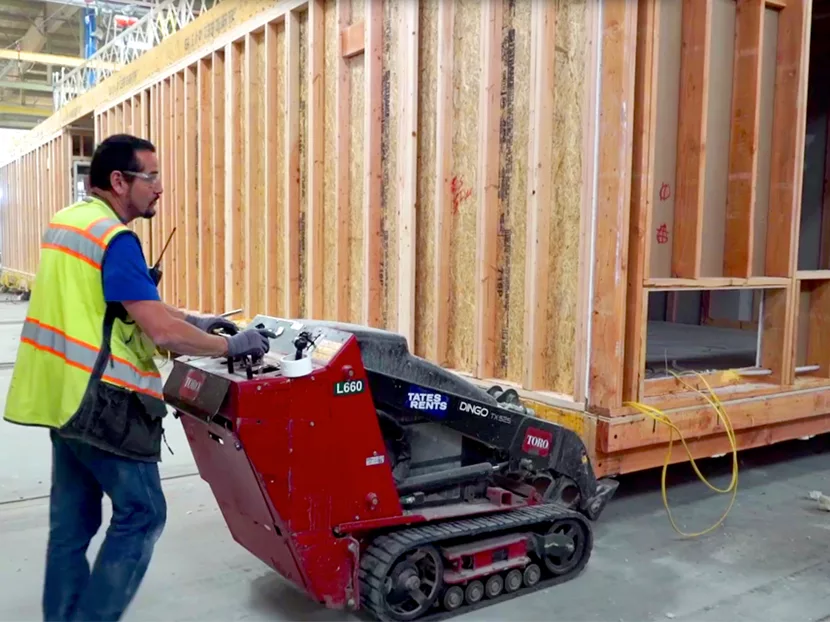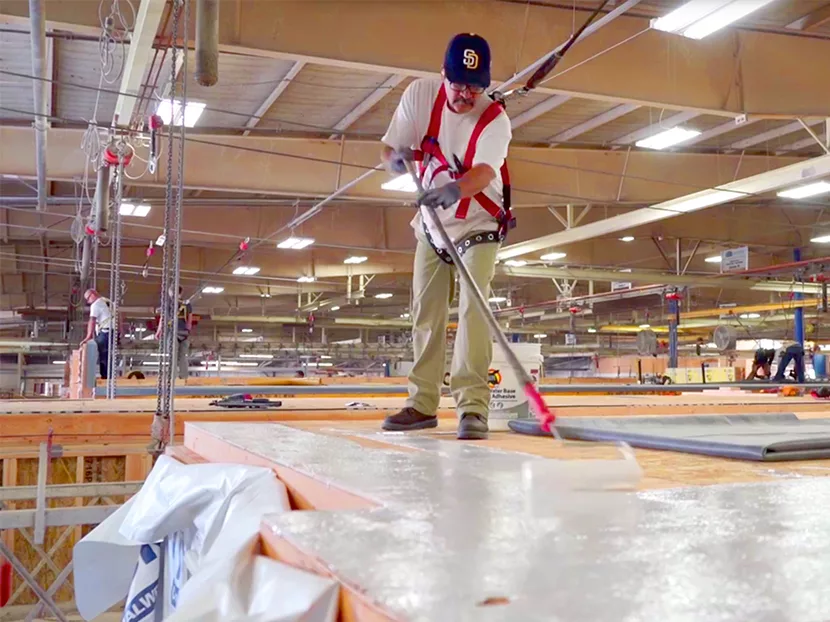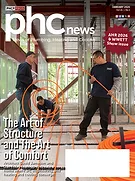What would you say if I wanted to cut your paycheck by a quarter for the same amount of work? What if, on the other hand, I wanted to pay you 30 percent more, without changing anything else? Or pay you the same, but give you an extra day off every week? Would that be significant? I think so.
That’s the kind of impact the chief financial officers of the construction industry dream about each night as they drift off into la la land. Now they’ve found a way to make that fantasy a reality. It’s called prefabricated building modules. As we all know, it’s not a new idea, but after a few false starts, prefabrication has re-emerged and is beginning to hit its stride. And it is saving 25-30 percent when used for the right kinds of projects.
Marriott is building 50 prefab hotels
One of the most popular ways to use prefab modules is for hotel rooms. Marriott has found that it can shorten construction schedules and cut costs, saving about 30 percent on each project. It is planning to use modular construction for as many as 50 new hotels. Other hotel chains are also building with prefab units. The manufacturers working with hotel chains are extremely busy, and for heating and plumbing trades there are some key advantages.
Marriott is now completing an $86 million, 354-room Courtyard & TownePlace Suites complex, on a 4-acre site across the street from the city hall in Hawthorne, California. It’s a few miles from the LA airport, Tesla design center, SpaceX, Mattel, Boeing, Aerospace Corp. and several airline head offices.
The airport serves about 80 million passengers each year. A new stadium is being built nearby for the LA Rams. In such a robust environment, the area is adding about 5,000 hotel rooms annually. In addition to saving costs, tighter construction schedules allow hotel companies to react quicker to such growth opportunities, open sooner and capture more revenue.
Simultaneous site work and suite construction
All the hotel suites and sections of its corridors were manufactured off site and trucked to the location then quickly craned into position. “You save the 30 percent because it’s a more efficient process and because you are building the suites at the same time as you are doing the site work,” says Chris Schmidt, business development manager at Guerdon Modular Buildings in Boise, Idaho. “We started the site work about six months ago, and we are just finishing the project now. The hotel will be operating this summer. If you were building it the old way, it would take 12-14 months for a project like this.”
Each module is about 70 x 12 feet and includes 2 hotel rooms plus the adjacent section of the hallway. Suites are virtually complete when they arrive, with windows, doors, locks, keys, tiled bathrooms, insulated plumbing, electrical systems, sprinklers, a pre-wired wall-mounted heat pump, drainpipes, shower and curtain, toilet, toilet paper holder, sink, faucet, lighting, intercom, all pre-installed into each module and pre-tested in the factory in Boise.
The walls are finished; carpets and curtains are in place; and the furnishings and appliances are shrink-wrapped together and strapped down in the middle of the room. They include a bed, dresser, tables, chairs, sofa, mini-fridge, TV, artwork for the walls, mini shampoo bottles, soap and toilet paper.
“Hot and cold water, fire systems and electricity are all stubbed out to the corridor, so it’s really easy to connect it all up on site,” Schmidt says.
Local trades tie into their pre-built mechanical and electrical systems and add seismic rods. Common areas are built on site in the conventional way, including meeting rooms, a fitness center, barbecue area, sports court, restaurant, spa and pool.
Skilled labor shortage
“This is a solution because there is such a labor shortage of skilled trades all over the country right now. With prefab, we can select the best tradespeople, who can live near the plant. They don’t have to drive to multiple jobsites. They specialize and work safely. Everything is done on one level without the need for scaffolding,” Schmidt adds.
“You’re inside in a controlled climate. There’s no rain or snow. The wood doesn’t get wet. The guys seem to prefer this approach. There is less work done on site, but there is a lot of upfront dialogue, photographs, drawings, schedule discussions, risk mitigation planning…”
While the flatbeds arrive, about 25 rooms can be positioned in a single day. After the suites are stabilized, a four-person housekeeping team cuts away the shrink-wrap, sets everything up and makes the bed. They can do about 10 rooms in a day. Guests have noticed that the rooms are quieter because they have double walls between them.
Growing market
Marriott says the benefits of the prefab approach include saving time, improved quality control and reduced environmental waste. Developers say it’s a way to avoid increasing cost, frustration with delays, site conflicts and skilled labor shortages. Research company Technavio says the global prefab construction market was about $79 million in 2015. It could exceed $110 million by 2020. Growth of about 7 percent is expected each year for at least the next 5 years.
Guerdon has been using the pre-fab system since 2006. It’s different and offers the advantages mentioned, but Schmidt says it comes with the challenges of managing a factory, employee facilities, production and personnel issues, and so on.
“Business is not a problem. Right now, demand outstrips supply,” he says. The company has numerous projects underway. It worked on Marriott’s first modular project in 2016, the Folsom Fairfield in Sacramento County. In all, it has installed about 1,500 rooms in 5 or 6 hotels for brands like Hilton, Hyatt and Hampton Inn. It also produces and installs apartments for affordable housing, seniors housing, student housing and market rate condos.
Beyond California
“We recently supplied 300 bathrooms for a 4-star hotel in Iowa,” says Doug Conradt, design engineer at Pivotek in West Chester, Ohio. They were complete with vinyl walls, tile floors and shower bases or tubs. They were prewired for electricity and the domestic water plumbing is all pre-done with faucets, sinks, toilets and single-point connections.”
In this case, the unit sits on top of the concrete slab. Bathrooms are the first thing placed on each floor. “We were connecting to a single pipe Sovent sanitary system, rather than a conventional parallel vent-stack system used often in high-rises. Waste and ventilation are both handled in one pipe from the ground floor up to the roof.”
“First the vertical and horizontal pipes were set in place, then the washroom unit was positioned under the rough-in. Then the final connection points for the lavatory p-trap and water closet flange were done, and finally the shower or tub drain.”
All 300 units were installed in three weeks. The company produced four units per day and shipped three trucks each Tuesday, Wednesday and Thursday. There were four bathrooms per flatbed, with individual weatherproof shrink-wrapping.
“If you are doing bathrooms only, you save about a month,” Conradt says. “But if you use modules for electrical racks, pump skids and wall units, you start to see significant schedule savings. A key advantage is a better quality product compared to stick built washrooms because we use jigs and templates for all building processes from walls to tiling. Everything is put in with jigs, so they are in the same place on each and every unit.”
He says that prefabrication is also safe. There are no ladders. “We work ergonomically at tables. And it reduces waste, for example, drywall cuts are optimized. It’s easier to manage the waste in the plant than on the site.”
It’s spreading
The Hill Group is pre-building and shipping about a dozen bathroom pods each day from its plant in Franklin Park, Illinois. A 7-story apartment building in Manhattan was assembled in 19 days in 2015, from 56 modular rooms built in a plant in Pennsylvania.
In Canada prefab companies are pre-building hotel rooms and other modules in Quebec and Ontario. A company in Toronto pre-fabricates wall panel systems, hospital washrooms, maintenance buildings, construction offices and lithium-ion batteries in sea containers for solar farms.
It recently pre-built 294 bathrooms, for a new hospital. The bathrooms were 9 feet tall and were craned to the edge of the 16-foot floor. The plumbing contractor used a pallet jack to wheel the unit into position, and workers at each corner simultaneously jacked it down into the slab depression. The plumber added extensions for the waterlines and the drain stack.
The waterlines are on top. Safety rules say that after they climb up they must be tied off, so the bathroom unit above has a precast hook in the bottom of it to clamp on the safety rig. This is just one example of numerous thoughtful improvements that can be made in the design stage, to make life easier and quicker on the jobsite.
Prefab modules are greener
According to the National Association of Home Builders (NAHB), a panelized building is environmentally friendly. It says: “Panelized building is an inherently green way to build ... Factory assembly means reduced construction material waste, less jobsite disturbance and easier cleanup. The precision construction of (prefab panels) makes them known for increased energy efficiency and lower heating and cooling costs ... most panelized (buildings) are weather-tight in a matter of days ... kept safer and dryer, reducing ... warping, mold, mildew and squeaking.”
Prefab hotel rooms and other building components are greener, safer for tradespeople, help solve labor shortages, result in higher quality, quieter experiences for customers and are selling like crazy. It all adds up to a 25-percent improvement in productivity. Good job. Way to go! Why don’t you take Friday off? You deserve it!







